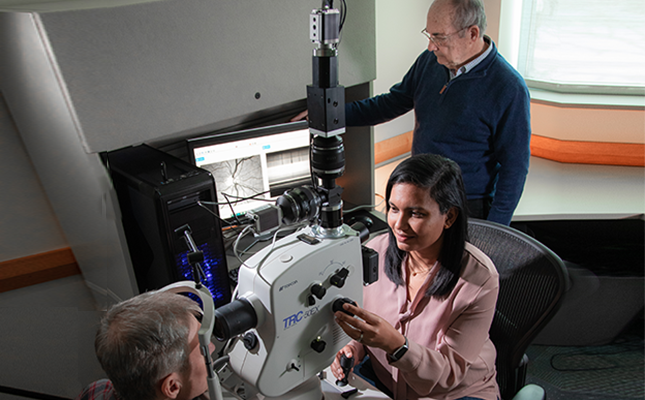
For years, Alzheimer’s was only detectable in autopsies performed after patients had died. More recent research advancements have made it possible to identify signs of the condition before symptoms first appear. At the forefront of this movement are Robert Vince, PhD, director of the Center for Drug Design (CDD) in the University of Minnesota's College of Pharmacy, and Swati More, PhD, associate professor, CDD.
Vince and More developed a new hyperspectral imaging technique based on research showing that a protein known as beta-amyloid forms plaques in the brains and retinas of people with Alzheimer’s. Using this new technique, Vince and More were able to identify plaques in mouse retinas and later found that these plaques may also be an early marker of Alzheimer’s in human eyes.
Vince and More have licensed their technique to medical imaging company Retispec and clinical trials are now testing the technique’s efficacy. Preliminary findings show the technique correctly identified people with the protein 86% of the time and those without the protein 80% of the time.